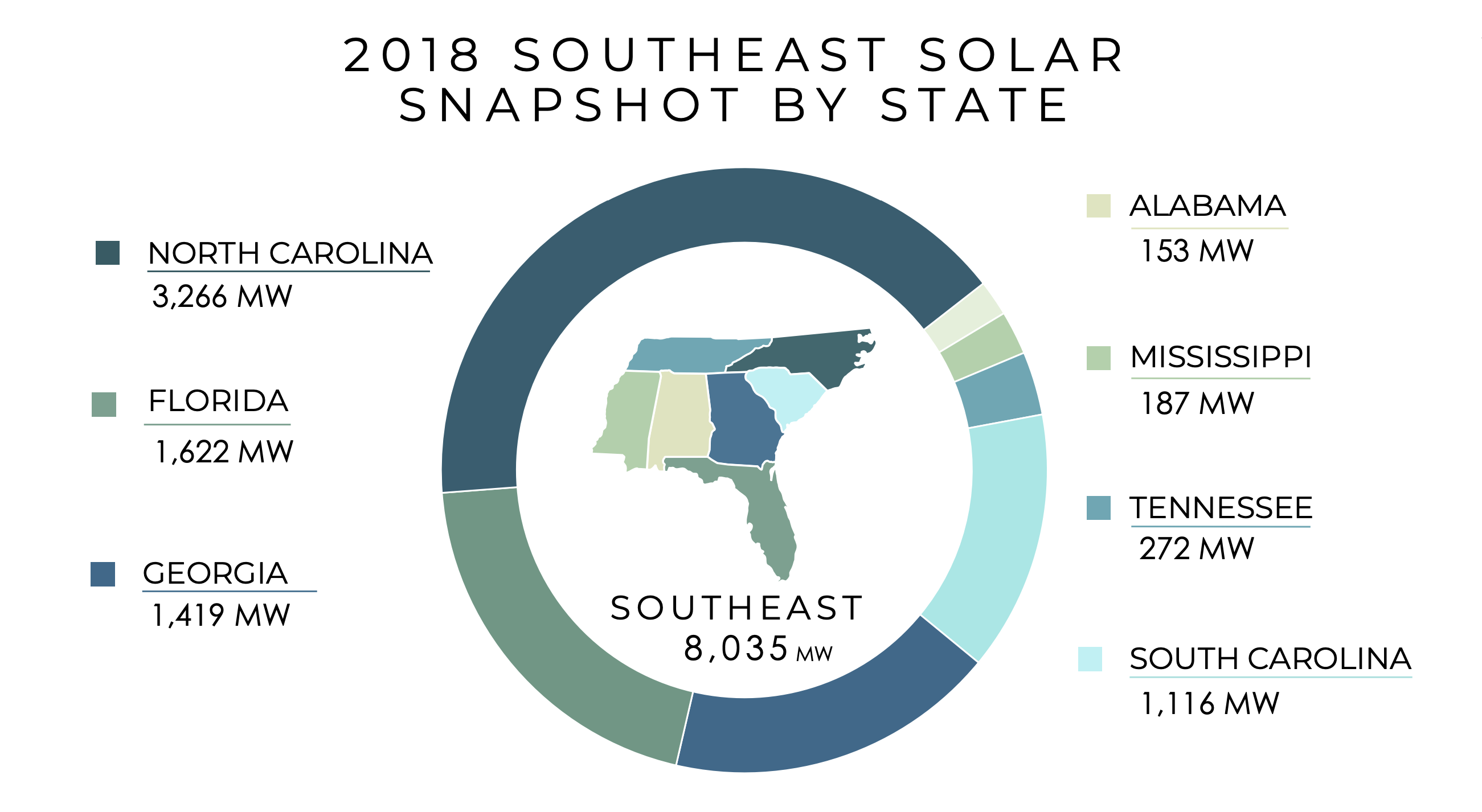While solar jobs increased in most states of the Southeast last year, the Solar Jobs Census last week revealed that Tennessee lost solar jobs in 2019. The state’s southern neighbor, Georgia, witnessed the highest percentage of solar job growth of any state in the country (+29.8%), yet Tennessee had the third-highest percentage job losses (-10.6%). Why is that?
The Solar Job Census report expresses that “[i]n 2019, Tennessee gained capacity but lost solar jobs, which likely reflects workers coming in from out of state.” But I contend that it had more to do with policies and decisions made by the Tennessee Valley Authority (TVA).
Full disclosure, SACE is among the plaintiffs in a lawsuit presently pending over the “Anti Solar Rate Changes” TVA has been systematically implementing.

We’ve Seen This Coming
In 2018, TVA structured a discriminatory Grid Access Charge (GAC) as a desperate measure to limit new technologies and customer freedoms. This fixed fee applies to Local Power Companies (LPCs) at the wholesale level and is “substantially and covertly transform[ing] TVA rates to the detriment of customers, particularly low-income, fixed-income, solar, and efficient customers.”
TVA also reduced payments offered to customers with solar panels and then abandoned the Green Power Providers program altogether. This completely undercuts the economic value proposition for residential and small business customers who might have otherwise been inclined to invest in solar on their own properties. The utility has become increasingly hostile to solar and has earned the dubious distinction of SunBlocker in our “Solar in the Southeast” annual report two years in a row.

Sustaining Solar Jobs Requires a Steady Pipeline of Solar Projects
And I think that’s the biggest culprit for the difference in Tennessee solar jobs between 2018 and 2019. Back in 2016, TVA had commissioned a 53 MW solar project (the largest project envisioned for the state at the time). Construction of that project in 2018 ultimately represented some 300 solar jobs. (In fact, looking back at prior editions of the Solar Jobs Census, Tennessee had gained 270 solar jobs in 2018 compared to 2017.)
And that wasn’t the only significant solar project in 2018. Two 15 MW projects and a couple of smaller projects (including the Music City Solar project in Nashville) were also constructed that year. Unfortunately, TVA had not continued to commission subsequent projects of that scale to sustain the 2018 momentum. The U.S. Energy Information Administration reported only three, small solar projects for a total of 5 MW under construction in 2019.
These “boom and bust” cycles wreak havoc on the industry — not to mention the people who rely on those jobs. 2019 may have been a “planning” year for TVA, but hyperbolic claims from their Integrated Resource Plan (IRP) about “up to” 14 GW of solar are not going to deliver the kind of expansion of solar jobs that neighboring state are enjoying. Jobs will only be created when the plan becomes reality and projects of that scale are commissioned.
Of course, solar projects for Facebook and Google captured headlines in late 2018 and early 2019 (and two of those will be in Tennessee, 150 MW each). Jobs resulting from those projects should peak in 2021 but hopefully will start contributing some employment this year, as well.
More recently, TVA has announced several new utility-scale solar projects (three in Tennessee including the one for Vanderbilt). Those will bring 215 MW of additional solar to the state and are scheduled for operation by the end of 2022. So as construction winds down on the Facebook and Google projects, this additional pipeline of projects may sustain those jobs.
Economic development is one of the core responsibilities of TVA. Creating and sustaining solar jobs is a component of that. TVA is in a unique position to avoid another boom and bust cycle. Now is the time to start awarding solar projects for 2023 and beyond.



